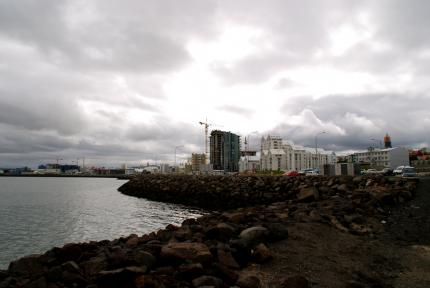-
Par MMaxi le 16 September 2008 à 20:20
-
-
-
-
Par MMaxi le 13 September 2008 à 15:28

VIKINGS IN ICELAND
Like many details of Viking history, the settlement of Iceland is clouded in mystery. Vikings did not record their exploits. However tales written in the 12th or 13th centuries, called Sagas, purport to tell of the founding of this far-northern island. According to these stories, many details of which have been confirmed by archeologists, Vikings discovered Iceland in the late 9th when a ship sailing from Norway to the Faro Islands was blown off course. Legend has it that the island had previously been inhabited intermittently by Irish monks.
Researchers say the history of the Viking colonization of Iceland could answer many questions about the impact of humans on nature. In most places, human occupation goes back thousands or tens of thousands of years, making it hard to study what role, if any, people had in changes in the flora and fauna. But in Iceland, scientists know almost precisely when settlers arrived, just over 1,000 years ago. Barring evidence to the contrary, they assume that any changes in wildlife since then has been caused by human activities.
For the last decade, archeologists in Iceland have been studying a cluster of abandoned Viking settlements near Lake Myvatn, on the island's north side. Carbon 14 dating of specimens from the digs and other evidence suggest these sites were some of the earliest farms in Iceland. The research shows that the impact of Vikings settlers on the wildlife of Iceland was swift and massive. For instance, chunks of charcoal and impressions in the soil of large roots suggest to the researchers that when these people arrived, the land was densely wooded. However within a generation the trees were gone, and irreversible soil erosion had set in.MMaxi08
-
-
Par MMaxi le 13 September 2008 à 15:22

Reykjavik
Reykjavík (IPA: [ˈreiːcaˌviːk]) is the capital and largest city of Iceland. Its latitude at 64°08' N makes it the world's most northern national capital. It is located in southwestern Iceland, on the southern shore of Faxaflói Bay. With a population of 120,000, it is the heart of Iceland's economic and governmental activity.
Reykjavík is believed to be the location of the first permanent settlement in Iceland, which Ingólfur Arnarson is said to have established around 870. Until the 18th century, there was no urban development in the city location. The city was founded in 1786 as an official trading town and grew steadily over the next decades, as it transformed into a regional and later national center of commerce, population and governmental activities.
Today, Reykjavík is the centre of the Greater Reykjavík Area which, with a population of 200,000, is the only metropolitan area in Iceland. As a highly modernized capital of one of the most developed countries in the world, its inhabitants enjoy a first-class welfare system and city infrastructure. Its location, only slightly south of the Arctic Circle, receives only four hours of daylight on the shortest day in the depth of winter; during the summer the nights are almost as bright as the days. It has continued to see population growth in past years as well as growth in areas of commerce and industry.
Reykjavík was recently ranked first on Grist Magazine's "15 Greenest Cities" list.MMaxi08
-
-
MMaxi Madeiraman












